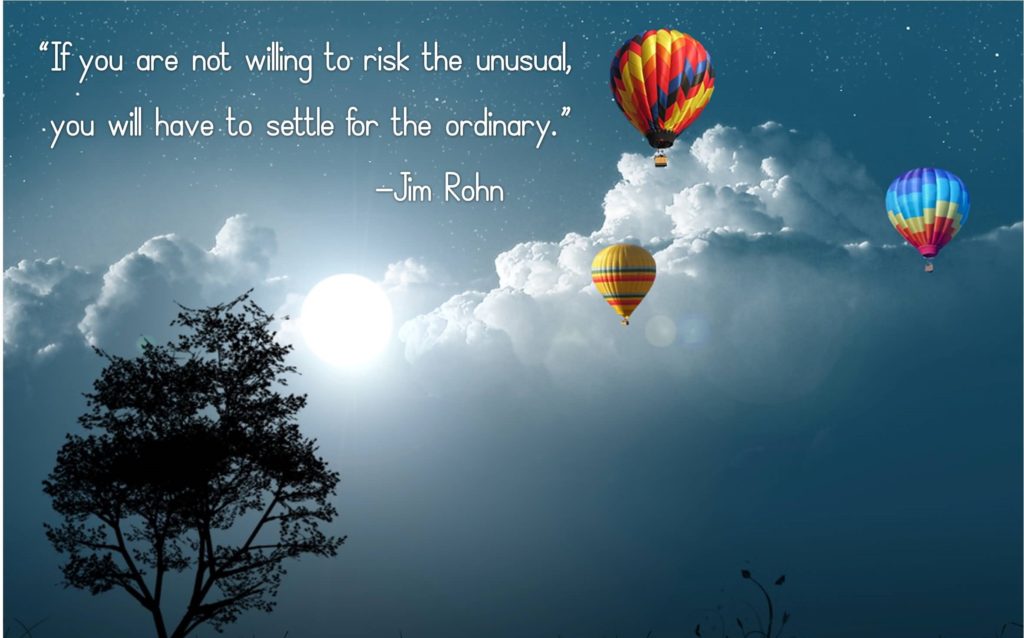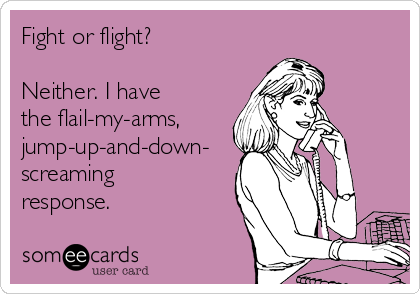
Most of the decisions that we make on a daily basis are simple to make because they don’t carry a lot of risk. Decision making becomes challenging when we feel that something important is at stake and we don’t know how to process the information. These five guidelines will help you decide whether or not a risk is worth taking and if you should take a leap of faith. (Estimated reading time: 6 minutes)
“There are risks and costs to action. But they are far less than the long range risks of comfortable inaction.”
— John F. Kennedy
As soon as you open your eyes in the morning, you’re faced with making a host of decisions. Most of them are low-stakes such as choosing what to wear to work, purchasing a pack of chewing gum, etc.
But high-risk choices can also be part of our everyday routine, like speeding through a red light, or giving in to addictions like recreational drugs, smoking, or drinking. Even if we’re cautious in high-threat situations, we can’t avoid the risks we face at crucial junctures in our life.
Big life decisions define the adulting process. Do I invest in a college education, or should I use my money to create a start-up company? Should I buy health insurance when I’m perfectly healthy now? Should I get married and start a family? Should I get that lump in my chest screened?
I received early training in grown-up decision-making playing a video game called Castle of Illusion. Mickey Mouse, the main protagonist, steps into a castle filled with several doors. He has to choose which door to open, unaware of who, or what, he would find behind each one.
I vividly remember that the ‘worlds’ he entered after opening each door offered distinctly different experiences in both enjoyment and challenges. This game taught me that all choices are inherently risky because we have no clue what we’ll find behind each door.

It’s especially difficult when we feel that something important is at stake and we allow our natural tendencies to run the show. A person who loves adventure might make decisions prematurely without careful consideration. A vigilant person who tends to focus on what could go wrong might miss out on opportunities.
Everyone on the risk-taking continuum finds it challenging to take on a balanced approach because of how our brains are wired. Due to millions of years of evolution, the human brain has developed all kinds of processes that often conflict with each other. Not surprisingly, assessing and reacting to risk is one of the tricky ones.
It’s also one of the most significant abilities in all living creatures. An antelope in the African savanna will immediately retreat to safety if it hears a suspicious rustle in a nearby bush. It heeds the command of a very primitive part of the brain called the amygdala.
Humans have the same basic anatomy as the antelope and other mammals. The amygdala causes the typical fight-or-flight response that keeps us safe in the face of immediate danger; dangers like a creepy stalker or a speeding car heading in our direction.

But as highly-evolved mammals, our brain structure and capacity are a lot more complex than that of an antelope or a bird. We’re built not only to respond to immediate danger but also to consider long-term problems that affect our futures. Some risks are better handled when we take the time to respond, even if it seems scary in the moment.
Instead of giving in to our natural reptilian instincts to take immediate action, we’re better off holding off on a decision and engaging in thoughtful analysis. When we take pause, we tap into the neocortex, a more sophisticated and advanced part of the brain that’s unique to humans.
The neocortex gives us the ability to think intelligently, analyze, and reason. The challenge is finding a way to interpret these parallel systems, the primitive, instinctive part and the advanced, rational neocortex system, and make choices that most benefit us in the long-run.
However, with the right guidelines, you can objectively assess whether a risk is worth taking. Here’s a checklist that will help you decide if you’re ready to take a leap of faith:
1. When you can afford to lose: One of the golden rules of investing is that you should avoid risking more than you can afford to lose. This rule applies not just to money but to other areas in your life: health and wellbeing, relationships, safety, and anything you consider important. Before taking a risk, determine the maximum potential loss that might result from the risk. If the loss is so significant that it can cause damages that will be hard to recover from, you might want to avoid doing it altogether or find ways to make the risk more manageable.
2. When you’re well prepared: You’ll feel more comfortable taking a risk if you have done everything you can to prepare: you’ve done your research by reading up on relevant material, talking to the right people, and forecasted potential consequences. After you’ve done your due diligence, you should know precisely what you’re getting into and have a Plan B if things don’t pan out as you hoped.
3. When the odds are in your favor: Part of evaluating each risky situation is knowing how likely it is that something will happen. But determining the odds of succeeding is not always straightforward. Hard data and numbers are the best way to do this, but they are not often available. When it isn’t, consider asking an expert’s opinion to be as informed as possible. You might also want to do a gut check and consider past patterns and trends from your earlier experiences. You might want to quantify any subjective thoughts and emotions with a concrete percentage.
4. The risk is a stepping stone to achieving your heart’s desire: Almost every goal requires a certain degree of risk. Working for yourself and setting up your own business will require the risk of financial investment and leaving a 9-5 job. Having a loving relationship will need you to be vulnerable and emotionally open up to it. Risks are worth taking when you believe that the potential benefits far outweigh them. Feeling a sense of excitement and anticipation about the idea of taking action is an internal “yes” from your Higher Self that it may be worth a try.
5. You know that you’ll regret not taking the risk: It’s hard to predict how we will feel in the future about a risk we decide to take. In his book, “Stumbling on Happiness”, Dan Gilbert writes that there is no guarantee that you will appreciate your decision, but you will have clarity about what you gained from it. You can examine it through the lens of rational thought, but a more effective way to do it is through the process of deep introspection.
You could do a higher self visualization exercise or simply ask yourself these questions: in 10, 20, or 30 years from now, how would you feel about not taking this leap of faith? How will it alter the story of your life? What will not taking the risk cost you? How will it make you feel about yourself and your potential? Your responses will let you know if a risk is worth taking.
We may not realize it, but we take risks every day. There’s a chance that we won’t get to see our near and dear ones again, and there’s also a chance that tomorrow may never come. That’s why every single day is a gift. Every morning when we wake up, we should be thankful that we’re still here and get to spend another precious day on planet Earth.
All my best on your journey,
Seline

Question for you: How do you handle risk-taking? Are there any changes you would like to make in how you go about deciding whether a risk is worth taking?
Did you like this post? Sign up below, and I’ll send you more awesome posts like this every week.

I struggle with this- really I’ve struggled with it my entire life. it’s hard for me to take risks because I am so afraid of failing and hurting and disappointing those who count on me, look up to me, or expect more out of me. it started with the high pressure my parents always put on me but now I still feel like if I can’t be sure something will work out or be worth the risk then its best to not take the risk and chance hurting or disappointing my family. 🙁
I’m trying to get better about it but it is a real struggle for me even today!
Liz
I suffer from two different anxiety disorders so I know how it is to be afraid to try something new out of fear of failure. It is one of the hardest things I have to force myself to do on a regular basis. if I didn’t I would just sit in my home all day long and never go out anywhere or interact with people. Even the smallest risk is a challenge for me but I am learning and working at getting better little by little. 🙂